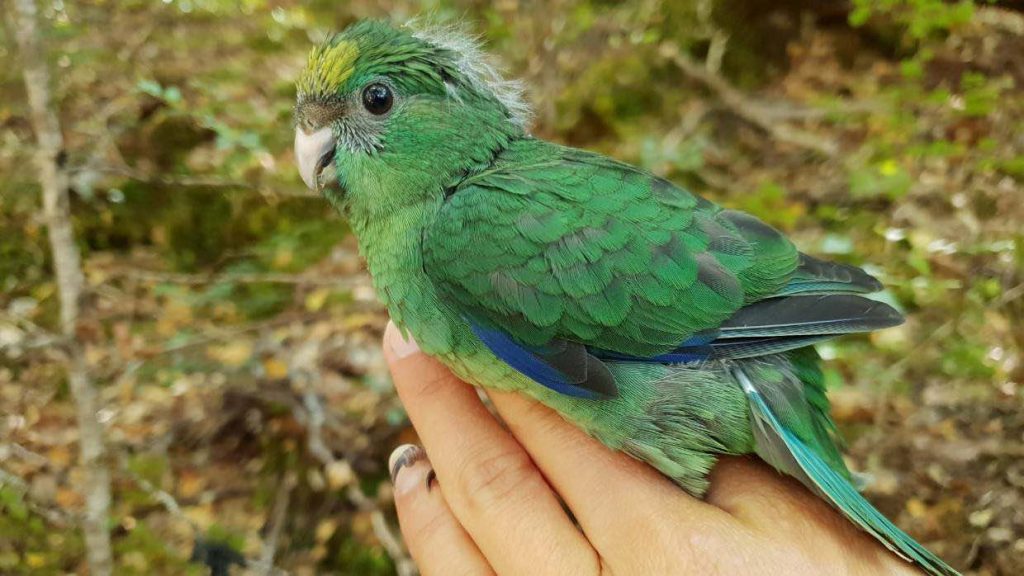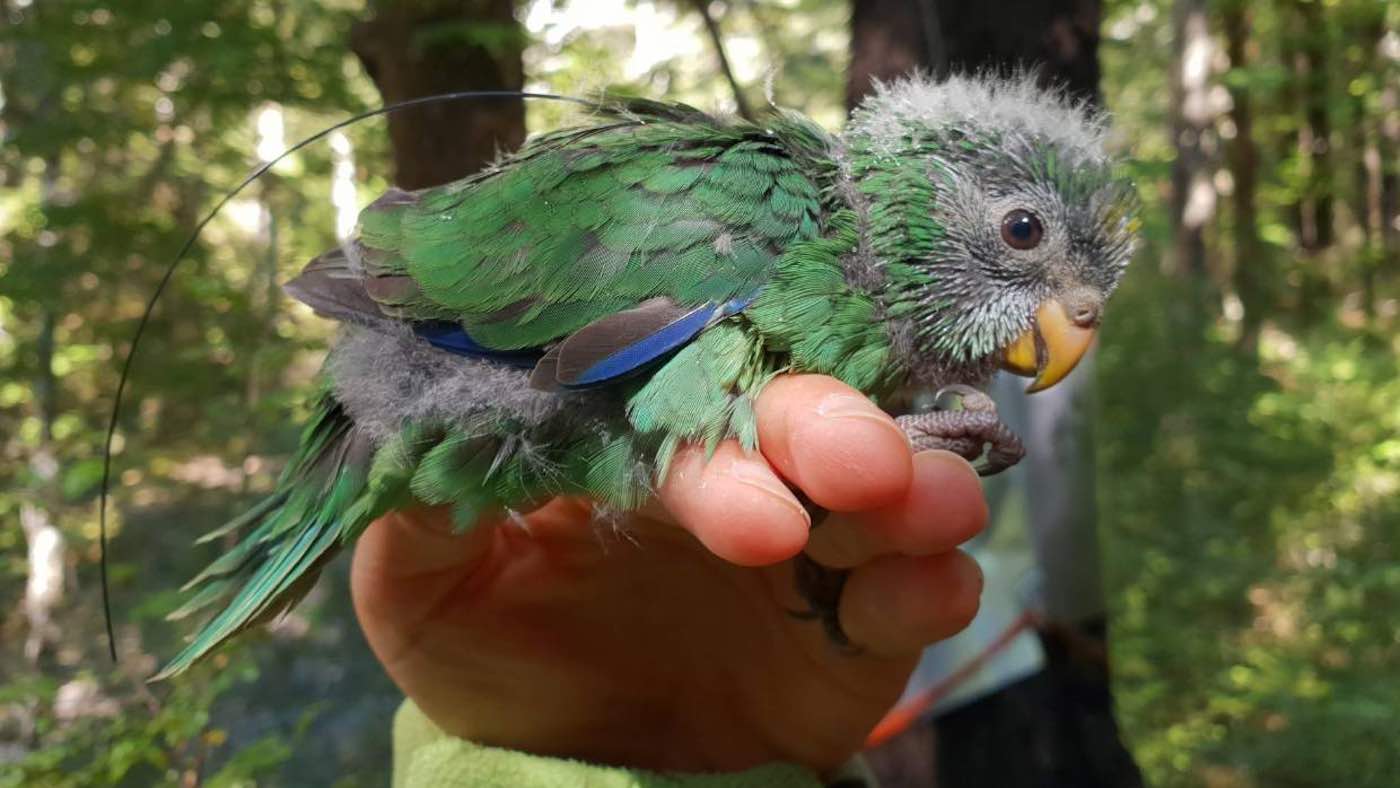The adorable orange-fronted parakeet is making an impressive comeback as New Zealand’s most endangered forest bird species—doubling its population with an epic hatch in 2019.
Known in the island nation as kākāriki karaka, it lives in beech forests and was thought to be completely extinct until 1993, when they were rediscovered in Canturbury.
There were only 100-300 individuals before this hatching season, so this year’s bounty of newborns could more than double their numbers.
Kākāriki are found only in a few places where their habitat still exists: a unique upland valley habitat of beech trees. The parakeets eat plants and insects, but when the beech trees produce seed, those become the flyers’ preferred food source. This year, those trees are fruiting like crazy, producing so much seed that wildlife conservationists haven’t seen anything like it in 40 years.
“The birds just keep on breeding, with some parakeet pairs onto their fifth clutch of eggs,” said Eugenie Sage, the Minister of the Department of Conservation.
Field staff have found at least 150 wild-born chicks so far this season—and they’re still hatching. Since the tiny orange-fronted parakeet has the ability to breed for 18 months straight, this baby boom might not end until the food runs out.

It has taken decades of committed conservation efforts to help the vibrant little Kākāriki. A captive breeding program in place since 2003 has led to 191 releases in the wild over the last four years. Ubered back out to their native habitat by the folks at Christchurch Helicopters, sixty-two were released just this year.
Sage acknowledged the crucial role of the Isaac Conservation and Wildlife Trust in Christchurch, which has been producing captive-bred birds for release into the wild—and now they have become a breeding machine.
RELATED: Dozens of Creatures Thought to Be Extinct Found Alive in ‘Lost City’ in the Jungle (Photos)
They have been “a lifeline for the tiny Canterbury population, and we’re now seeing the real dividends of all of the Trust’s hard work.”
(SEE these birds in action with a Department of Conservation video)
TWEET and Chirp the Good News on Social Media!




















